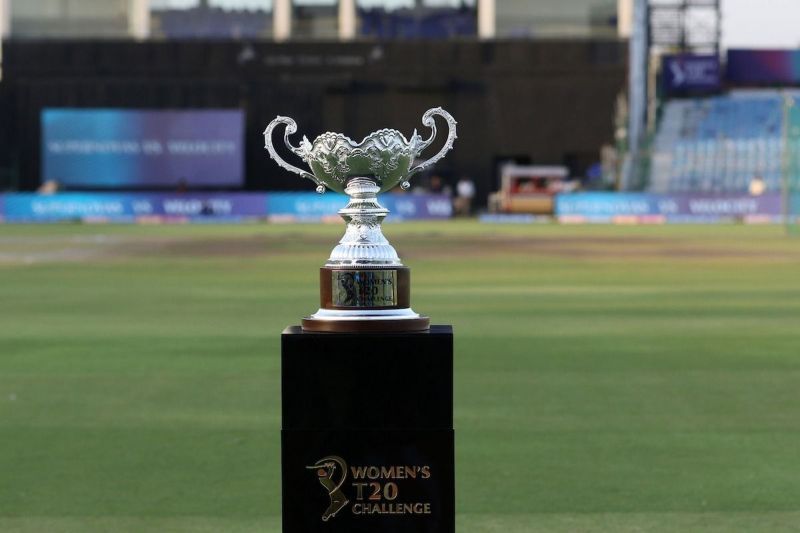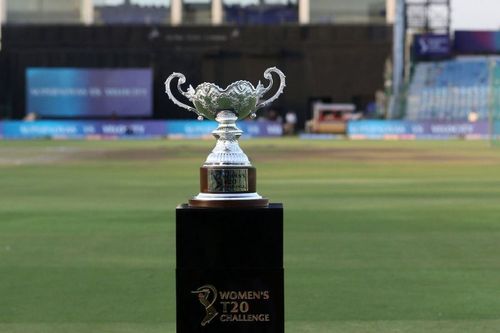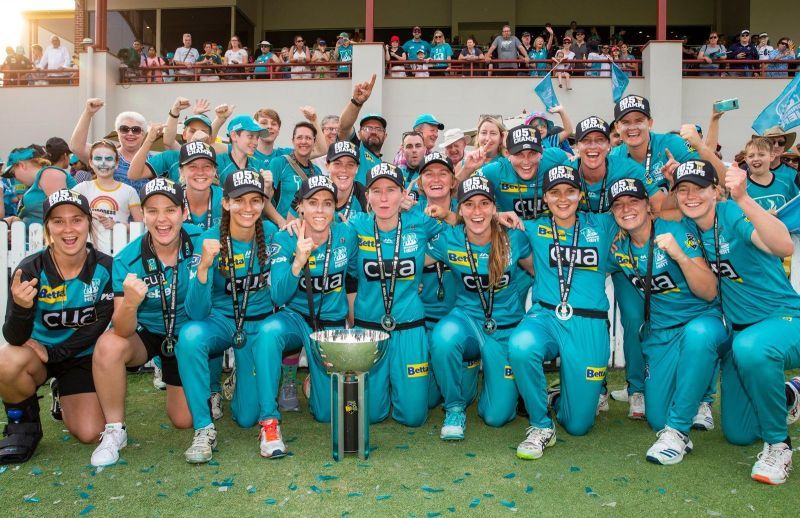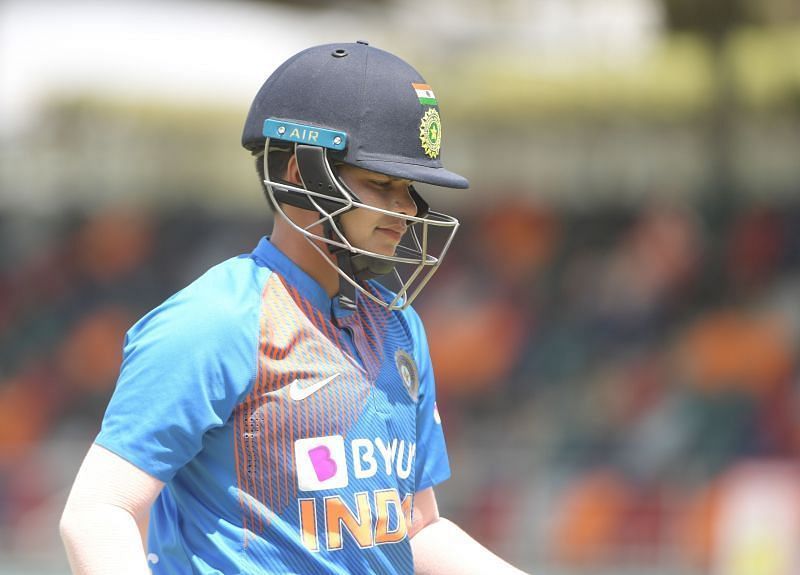
The BCCI and the Women’s IPL conundrum

The Women’s T20 Challenge started off as a one-off T20 fixture between Harmanpreet Kaur’s Supernovas and Smriti Mandhana’s Trailblazers back in 2018. Since then, the tournament has expanded into a three-team annual event with Mithali Raj’s Velocity being thrown into the mix.
For three editions now, the Women’s T20 Challenge has been conducted in parallel with the IPL playoffs. While that may seem to bring more eyes to the tournament, it has felt like a bit of an afterthought.
Besides, what, according to the BCCI, is the right time for the Indian women to have their first full-fledged franchise cricket tournament? The ladies have gone from strength to strength in the past few years, and the least that the cricket board can do right now is capitalise on that momentum and take women’s cricket to the next level.
Can the BCCI mirror the WBBL?

Take the Australian team for example, arguably the best in the world. The Aussies have won 5 out of 7 T20 World Cups to ever have been played. An important part of women’s cricket Down Under is their own IPL-styled franchise tournament - the Women’s Big Bash League (WBBL).
The WBBL has allowed the younger cricketers to rub shoulders with some of the world’s best, giving them a platform to show the world what they can do while also letting them gauge just how good they are.
Multiple-time T20 World Cup winner Lisa Sthalekar recognises just how much the introduction of the WBBL has done for women’s cricket in Australia.
“So the example here of the WBBL - I think it’s the best T20 domestic league in the women’s game, and what it’s done is it has allowed players like Georgia Wareham, Sophie Molineux, Tayla Vlaeminck, so young girls get more of an opportunity straightaway. So they’ve gone from six state sides to eight franchise teams,” Lisa Sthalekar recently told Sportskeeda in an exclusive interview.
The question is - Can India follow the same model? A common argument against it is that India does not have the talent pool required to host a full-blown IPL-style franchise competition. And while, on the surface, the argument may seem to hold good, isn’t a competition like this exactly what the country needs to unearth any kind of hidden talent?
The precursor to the WBBL, the Australian Women’s Twenty20 Cup, had seven state sides, one fewer in comparison to its more glamorous sequel. The WBBL took the talent available within these sides, threw in a mix of established international stars to bring about the biggest franchise league on the planet when it comes to international cricket.
Women’s cricket were the ultimate winners thanks to this league, but a sizable chunk of that victory was tasted by the Australians. Sthalekar went on to explain exactly how that happened.
“It (going from seven state sides to eight franchise teams) thinned it out initially and everyone was like ‘*gasps* the quality is not going to be as good’ but what it did do is it allowed those players that would bat down the order in their state team bat in the top-order or get more overs. Those players are then mixing it with the best players in the world, bowling to the best players or batting against the best bowlers,” Sthalekar says.
“So when those players then get selected to the Australian team, no longer are they waiting in the wings to bide their time and learn how to play the game at that level. They go in and they’re ready for it. Because there’s already been cameras thrown in their face, televised matches, being mic’d up, it’s just a normal part of the routine. That’s from a domestic level where it has helped to strengthen and create a bigger pool of players for Australia to pick from,” Sthalekar adds.
Now, the WBBL has also benefited other national teams. When you come to the most professional league in the world, and rub shoulders with the best in the business, it can only bring out the best in you. Thus, players, and in turn their national teams, were better for playing in the WBBL.
“You can also look at South Africa as a prime example. I think last WBBL we had 8 players - the most that we’ve ever had from South Africa. Then you look at their performances in the last T20 World Cup, where they beat England for the first time, and nearly beat Australia in the semi-final. That experience of playing with and against the better players regularly has improved their performance. It takes away the star-studded factor… they’re just, ‘They used to be my teammate. They’re just normal, they make mistakes, they’re nervous.’ It takes away all of that and all of a sudden, South Africa are a side that are really strong contenders for an ICC trophy,” Sthalekar tells us.
“It’s almost like buying a house” - Lisa Sthalekar on starting the Women’s IPL

The best time to start a similar franchise league in India was probably a long time ago. And the universe has only thrown several opportunities in the BCCI’s way to do it since, given the rising popularity of the women’s game in India in the past few years. That, without going into just how much it could do for the Indian women’s team itself.
Just imagine what sharing a dressing room with someone like Alyssa Healy could do for Shwetha Verma’s confidence. A young Shafali Verma could learn so much from just playing alongside a seasoned veteran of Sophie Devine’s ilk.
Can India, with its supposedly thinner talent pool, actually manage to play host to a proper full-fledged franchise league? Sthalekar, who has always been outspoken in this regard, certainly thinks so.
“Absolutely. The fact that you’ve got what… 33 states? Around 30. So there are certainly enough players around there. I think it will also showcase to a wider audience in India, and it will inspire more young girls to pick up the bat and ball and play. So I’ve said this before… Even though there’s a fear that the standard may not be upto scratch, you can create different rules to maybe allow more international players to start with. Less teams, maybe? Whatever you want to do. But the sooner you start, the better Indian women’s cricket will be for it,” Sthalekar says.
The former Australian skipper also believes that the board just needs to look past the initial pains of investing in the league, just so they can reap its benefits at some point in the future.
“It’s almost like buying a house. You don’t want to part with all your money because then you won’t have any money. But then your investment will grow exponentially, compared to it sitting in your bank account and growing a small amount of interest. I mean you’ve got to go through a bit of pain for a lot of gain,” Sthalekar adds.
And while building a full-fledged franchise league from scratch may be a lot harder than it seems, several of the problems associated with it could be eliminated by having existing franchises form women’s teams. The very least that would do from the viewers’ point of view is to draw in fans of these existing franchises, and give them a team to follow in a full-fledged women’s IPL.
The immediate gains from a league such as this would be the improvement in quality, and popularity, of women’s cricket in India, there is so much more to be achieved in the long-term. The promise of a good livelihood would go miles in encouraging young girls to pick up a bat or a ball, and pursue the game, and their dreams, professionally.
The next obvious step in taking the women’s game one level higher in the country would be for the BCCI to start an out-and-out women’s IPL. Whether the board is able to look past the money-minting machine that is men’s cricket in India, and take the next step, is yet to be seen. All we, as fans of the women’s game, can do is hope.